Resources
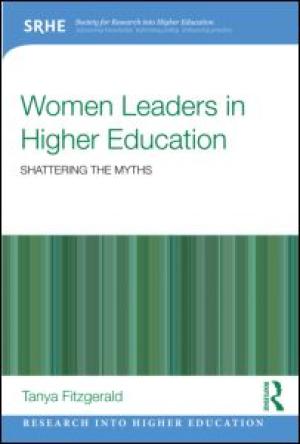
Click Here for Book Review Abstract: Leadership in universities is physically, intellectually and emotionally demanding work. It involves multiple and complex tasks and responsibilities such as staff management, strategic management, operational planning, financial and resources management, policy development, quality assurance processes, improving student outcomes, and engaging with community and the professions/industry. Leadership is not simply the act of being a leader, it is the act of leadership that projects ‘success’ and ‘desirable’ attributes. Leadership has the capacity to be deeply seductive yet it is not an immediately attractive option for women, particularly for those who carry the burden of family and domestic responsibilities, for whom finding a space for leading is no easy task. Yet despite the almost pessimistic research evidence, women are in senior leadership positions in higher education, however precarious their numbers. There can be little doubt that universities benefit from diversity in their student and staff population This book addresses the central questions; Who are the women who survive and occupy elite leadership roles in universities? How might their leadership be shaped by and a consequence of institutional climate? What strategies do they learn and adopt and how do they lead and manage their female colleagues? What about those women who do not ‘fit’ the gender script? The chapters overview the changing policy landscape in higher education; provide a critical commentary on the interplay between gender, leadership, higher education, and organisational diversity, and draw on education and critical management literatures in order to offer a broader understanding of gender and elite leadership; This book will be essential reading for anyone involved or interested in higher education policy and management, academic leadership, organisational diversity and gender studies. (From the Publisher)

Click Here for Book Review Abstract: In the current ever changing world – the liquid modernity – the most pressing psychological challenge to all of us is to create and maintain a personal balance between mental stability and mental flexibility. In Transformative Learning and Identity Knud Illeris, one of the leading thinkers on the way people learn, explores, updates and re-defines the concept and understanding of transformative learning while linkingthe concept of transformative learning to the concept of identity. He thoroughly discusses what transformative learning is or could be in a broader learning theoretical perspective, including various concepts of learning by change, as opposed to learning by addition, and ends up with a new, short and distinct definition. He also explores and discusses the concept of identity and presents a general model depicting the complexity of identities today. Building on the work of Mezirow, various perspectives of transformative learning are analysed and discussed, including; transformative learning in different life ages; progressive and regressive transformations; motivation and identity defence; development of identity; personality and competence, and transformative learning in school, education, working life, and in relation to current and future life conditions. This vital new book by one of the leading learning theorists of our time will prove of lasting interest to academics, teachers, instructors, leaders and researchers in the field of adult learning and education. It will also appeal to many students and researchers of psychology and sociology in general. (From the Publisher)
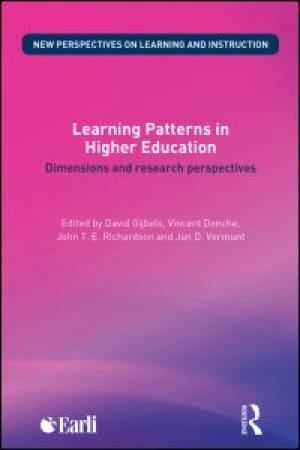
Click Here for Book Review Abstract: Learning Patterns in Higher Education brings together a cutting edge international team of contributors to critically review our current understanding of how students and adults learn, how differences and changes in the way students learn can be measured in a valid and reliable way, and how the quality of student learning may be enhanced. There is substantial evidence that students in higher education have a characteristic way of learning, sometimes called their learning orientation (Biggs 1988), learning style (Evans et al. 2010) or learning pattern (Vermunt and Vermetten 2004). However, recent research in the field of student learning has resulted in multi-faceted and sometimes contradictory results which may reflect conceptual differences and differences in measurement of student learning in each of the studies. This book deals with the need for further clarification of how students learn in higher education in the 21st century and to what extent the measurements often used in learning pattern studies are still up to date or can be advanced with present methodological and statistical insights to capture the most important differences and changes in student learning. The contributions in the book are organized in two parts: a first conceptual and psychological part in which the dimensions of student learning in the 21st century are discussed and a second empirical part in which questions related to how students’ learning can be measured and how it develops are considered. Areas covered include: Cultural influences on learning patterns Predicting learning outcomes Student centred learning environments and self-directed learning Mathematics learning This indispensable book covers multiple conceptual perspectives on how learning patterns can be described and effects and developments can be measured, and will not only be helpful for ‘learning researchers’ as such but also for educational researchers from the broad domain of educational psychology, motivation psychology and instructional sciences, who are interested in student motivation, self-regulated learning, effectiveness of innovative learning environments, as well as assessment and evaluation of student characteristics and learning process variables. (From the Publisher)
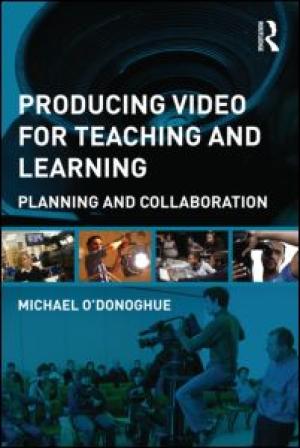
Click Here for Book Review Abstract: Producing Video for Teaching and Learning: Planning and Collaboration provides lecturers, researchers, professors, and technical staff in educational settings with a framework for producing video resources for teaching and learning purposes. This highly useful guide brings together the literature from the field into a constructive, developmental framework, prompting users to reflect on their own ideas at each stage of the production process. O’Donoghue makes clear distinctions between related aspects of video production, and offers working definitions where appropriate in order to address the academic and tertiary support technical audience. Interviews with established professionals in the field illustrate the possibilities—and limitations—of video for teaching and learning. Producing Video for Teaching and Learning gives readers the power to enhance the learning capacity of their own video materials. (From the Publisher)
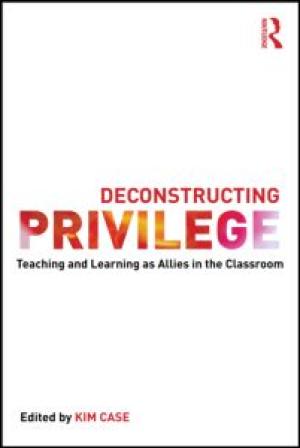
Although scholarly examinations of privilege have increased in recent decades, an emphasis on privilege studies pedagogy remains lacking within institutions. This edited collection explores best practices for effective teaching and learning about various forms of systemic group privilege such as that based on race, gender, sexuality, religion, and class. Formatted in three easy-to-follow sections, Deconstructing Privilege charts the history of privilege studies and provides intersectional approaches to the topic. Drawing on a wealth of research and real-life accounts, this book gives educators both the theoretical foundations they need to address issues of privilege in the classroom and practical ways to forge new paths for critical dialogues in educational settings. Combining interdisciplinary contributions from leading experts in the field-- such as Tim Wise and Abby Ferber-- with pedagogical strategies and tips for teaching about privilege, Deconstructing Privilege is an essential book for any educator who wants to address what privilege really means in the classroom. (From the Publisher)

Click Here for Book Review Abstract: More people than ever are going to graduate school to seek a PhD these days. When they get there, they discover a bewildering environment: a rapid immersion in their discipline, a keen competition for resources, and uncertain options for their future, whether inside or outside of academia. Life with a PhD can begin to resemble an unsolvable maze. In Behind the Academic Curtain, Frank F. Furstenberg offers a clear and user-friendly map to this maze. Drawing on decades of experience in academia, he provides a comprehensive, empirically grounded, and, most important of all, practical guide to academic life. While the greatest anxieties for PhD candidates and postgrads are often centered on getting that tenure-track dream job, each stage of an academic career poses a series of distinctive problems. Furstenberg divides these stages into five chapters that cover the entire trajectory of an academic life, including how to make use of a PhD outside of academia. From finding the right job to earning tenure, from managing teaching loads to conducting research, from working on committees to easing into retirement, he illuminates all the challenges and opportunities an academic can expect to encounter. Each chapter is designed for easy consultation, with copious signposts, helpful suggestions, and a bevy of questions that all academics should ask themselves throughout their career, whether at a major university, junior college, or a nonacademic organization. An honest and up-to-date portrayal of how this life really works, Behind the Academic Curtain is an essential companion for any scholar, at any stage of his or her career. (From the Publisher)
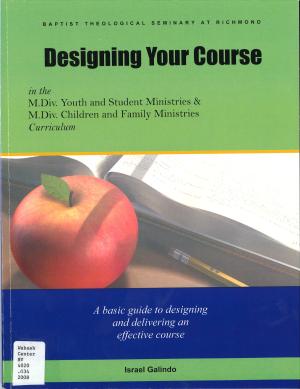
This guide will help you design your course in the Children and Family Ministry and the Youth and Student Ministry M.Div. concentrations at Baptist Theological Seminary at Richmond. Using two proven educational frameworks for course design you will be able to create a powerful course that will facilitate a meaningful learning experience for your students, and a rewarding teaching adventure for you. Using the frameworks of Understanding by Design (Wiggins and McTighe) and the learning principles of that classic educational theory of Constructivism you will be able to design a course that: Is student-centered Applies theory to practice Is experiental Leads toward self-understanding Is congregationally focused (From the Publisher)
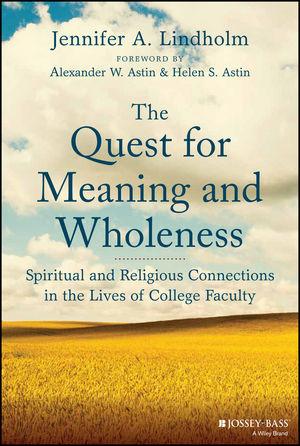
Click Here for Book Review Abstract: If institutions are to create campus environments that provide welcoming and engaging contexts for personal and professional development of students, faculty, administrators, and staff, all members of campus communities must be willing to look closely not just at what they do (or do not do) on a daily basis, but also why. This book offers an analysis of how faculty perceive intersections between spirituality and higher education, and what implications their spiritual inclinations have, not only for undergraduate education, but also for faculty life within academic workplaces. The Quest for Meaning and Wholeness draws on the 2012 Faculty Beliefs and Values Survey of just over 8,500 faculty employed at a range of institutions, and features faculty voices to answer the “So what?” question about why administration, faculty developers, and researchers should care about the spiritual and religious lives of faculty. (From the Publisher)
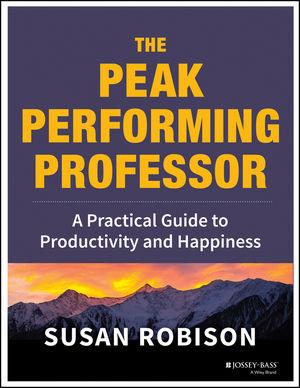
Click Here for Book Review Abstract: Grounded in research on neuroscience, faculty development, work productivity, positive psychology, and resilience, this faculty development guide is filled with the techniques and strategies that go beyond a discussion of work-life balance and teaching tips to offer practical tools for managing the life of the professor while maximizing his or her potential. Faculty who complete the book’s exercises are able to anchor their work, roles, and use of time in their most deeply held values, to integrate their personal and professional lives into a seamless garment, and to create a legacy of a life well-lived. (From the Publisher)
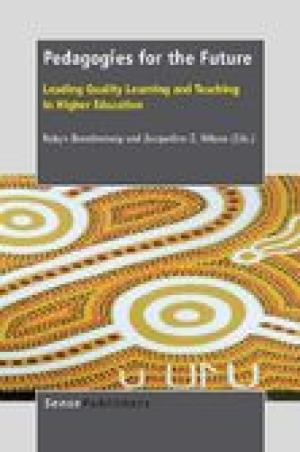
Pedagogies for the Future illustrates a unique and exciting endeavor whereby a group of academics across one university developed a professional learning community for the purposes of investigating, articulating and developing their scholarship of practice. Through their collaborative efforts, these educator-researchers sit at the forefront of calls to take teaching seriously in higher education and to recognize the powerful potential of interdisciplinary collaboration. The book provides a model for establishing learning communities in higher education and demonstrates that such work is not only possible but also successful. From vision to reality, Pedagogies for the Future offers important insights into the complex nature of researching teaching and learning in higher education from the perspectives of those directly engaged in it. This book will be of great interest and value to both scholars and administrators. (From the Publisher)